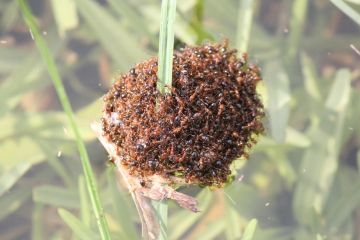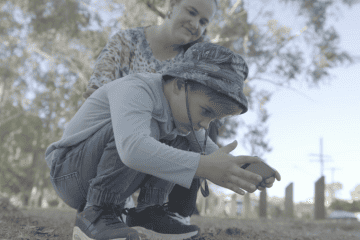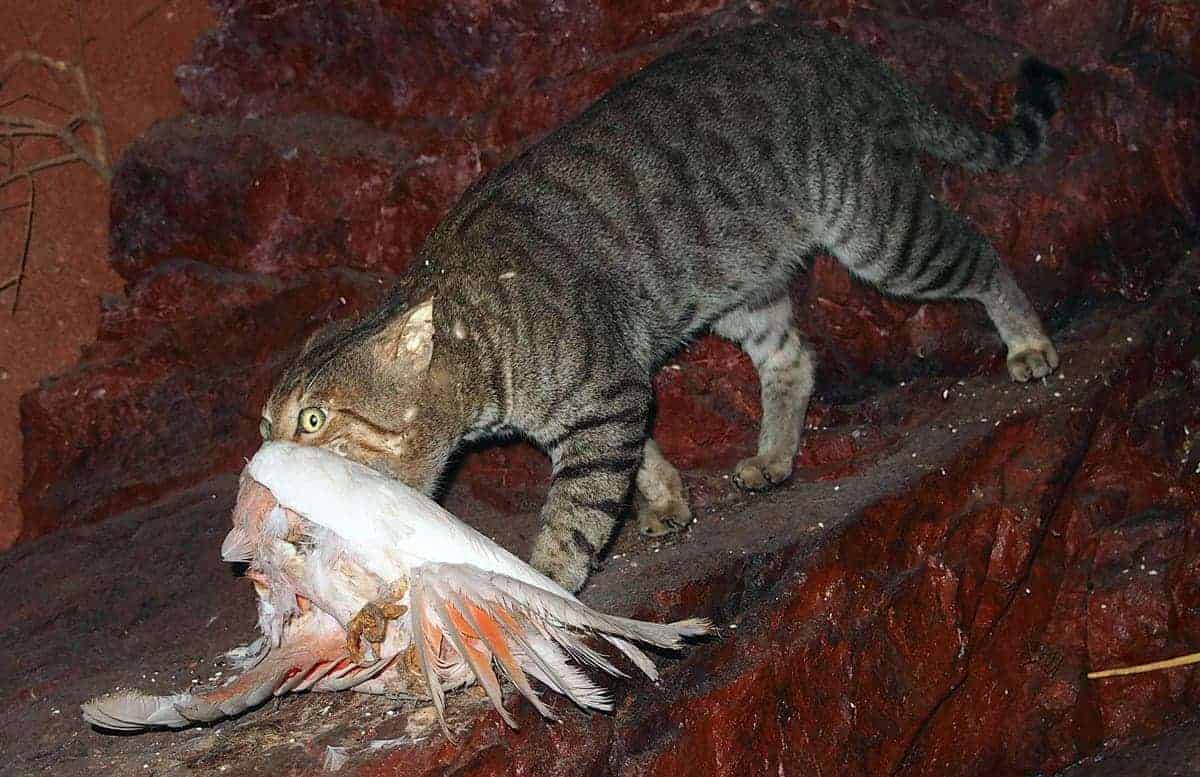With Christmas and school holidays just around the corner, families and holidaymakers in northern NSW and South-East Queensland are being urged to take action against one of Australia’s most destructive pests. The Invasive Species Council is calling on local communities to join the fight against fire ants and make a lasting impact this holiday season.
By looking, snapping and reporting sightings of these super pests, you can not only engage in a fun, citizen science activity with the family, but you could also be contributing to keeping your community safe from the dangers of fire ants.
‘Whether you’re a local or a visitor, we all enjoy being outdoors in these beautiful places over the summer holidays. Sadly these incredible holiday spots are at risk of a fire ant invasion, so we’re asking Australian families to step up and join the fire ant fight,’ Invasive Species Council Advocacy Manager Reece Pianta said.
‘It’s a fun, easy way to keep the kids occupied – Just take a picture of any suspicious ants and report it!
‘Of course, fire ants are dangerous. Don’t put yourself, clothing or belongings in direct contact with ants or their nests.
‘If your kids are curious about an ant nest they’ve seen, make sure you go with them and ensure they stay at arm’s length when taking a photo
‘It’s important to avoid direct contact with the ants and their nests.
‘As the weather warms up and with recent flooding events, fire ants will be more active, particularly in the early morning and early evening. Community reporting is the main way fire ants are being found.
‘Ongoing containment and suppression mean it is still possible to eradicate fire ants from Australia if we all do our part.
‘While out in the garden, at the park, taking a walk, camping or at the beach, we should all be on the lookout for suspicious ants.’
** IMPORTANT: IF YOU ARE STUNG BY FIRE ANTS YOU MIGHT NEED MEDICAL ATTENTION **
How to identify a fire ant nest
- Fire ants are 2-6mm, coppery brown and exhibit a swarming response when nests are disturbed.
- Colonies contain ants of different sizes.
- Nests often take the form of a mound of dirt without an obvious entry hole on top as foraging tunnels are the main nest access points. Nests can also be below ground and hard to detect.
- Fire ants prefer open areas with direct sunlight, disturbed soil, and nearby water, footpaths and utility boxes. Fire ants do not usually nest or forage inside human structures.
How to look, snap and report a suspected fire ant nest:
- Keep your eyes peeled for suspicious ants or ant mounds when you’re out in the garden, at the park, taking a walk, camping or at the beach. Don’t worry if you’re not sure what type of ant it is, every report is vital information for the eradication program.
- Be mindful of your safety if you think you have found fire ants. Keep your distance and do not put yourself, clothing or belongings in direct contact with fire ants or their nests.
- Take a photo or short video of the ants on your smartphone. Try to take a few close ups of the ants and their nest.
- Report fire ants to:
- Queensland: 13 25 23 or www.fireants.org.au
- New South Wales: 1800 680 244 or https://www.dpi.nsw.gov.au/biosecurity/forms/report-exotic-ants
- If you think fire ants are on your property, find advice on what to do by visiting: https://www.fireants.org.au/treat/residential-landowner-or-tenant
Photos and video to accompany this release are available here.
Fire ant impacts if they are allowed to spread across Australia include:
- Over $2 billion per year economic burden;
- Cut agriculture output by up to 40%.
- 650,000 extra medical visits and over 3,000 anaphylactic reactions every year.
- In the most heavily infested areas 60% of people could be stung every year.
- Damage to water and electrical infrastructure.
- Population declines and habitat loss for native wildlife that could lead to extinction.
- Fire ants will be worse than cane toads, rabbits, foxes and feral cats combined if they get out and spread across Australia.









